Tai Po Market: Veggies and Rebellion
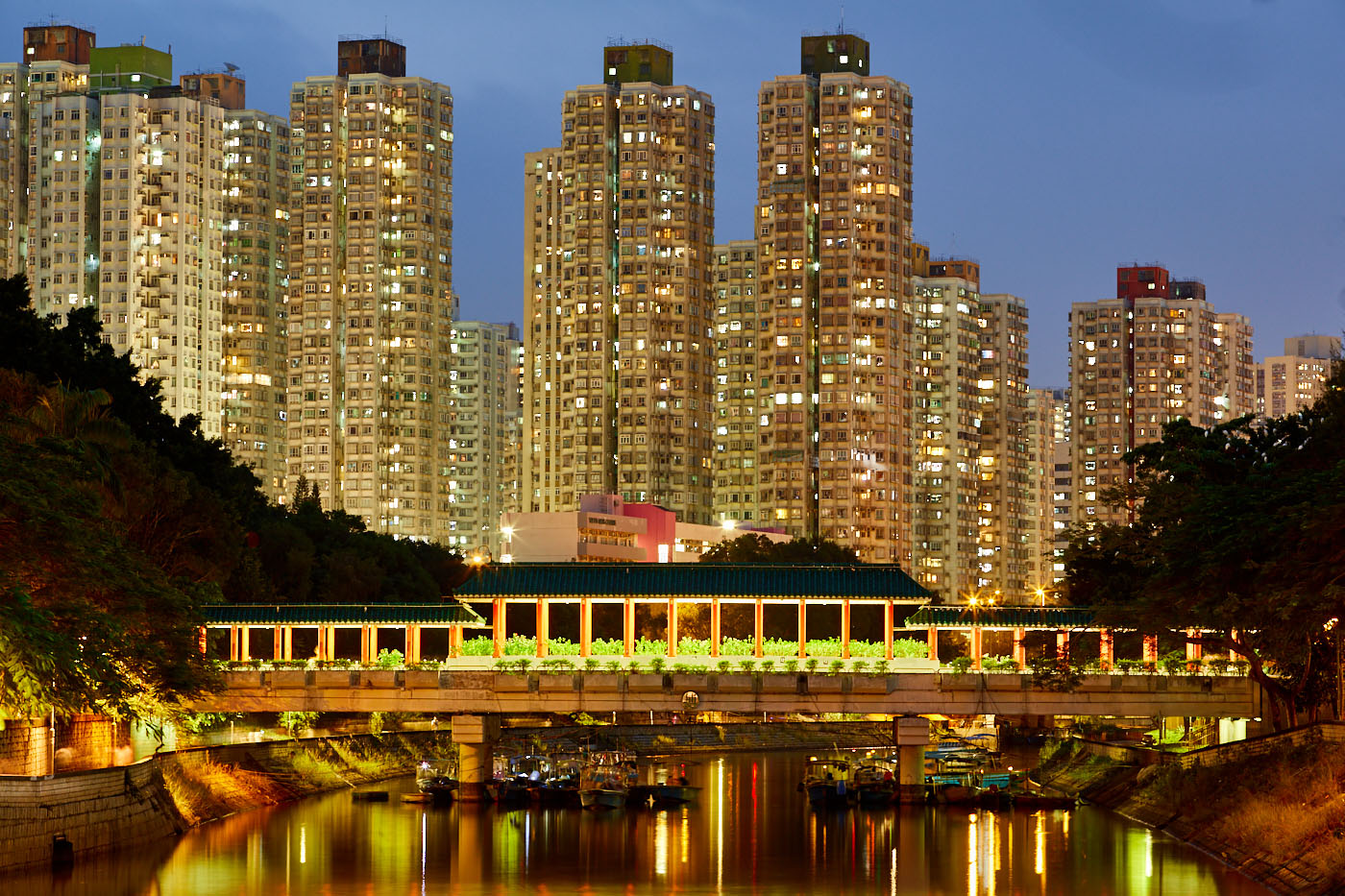
Tai Po Market: Veggies and Rebellion
On April 16th, 1899, the British raised the Union Jack on Flagstaff Hill, Tai Po, formally taking possession of the New Territories. Not everyone was happy. The British because they had been forced to raise the flag a day early amidst the ashes of some temporary bamboo structures called matsheds. They had been built specially for the occasion but were burned to the ground two days previously.
The New Territories villagers were unhappy because they didn’t want the flag to be raised at all. They had originally planned a surprise attack for the official flag-raising ceremony on the 17th but enthusiasm got the better of them. It was they that had torched the matsheds.
At the latter end of the nineteenth century, the British were at the height of their imperial pomp. They firmly believed that anyone who didn’t want to live under the benevolent gaze of Queen Victoria were potty. They had inked a 99-year lease with China ten months earlier but had done little since to communicate their intentions to their new subjects. The British, in fact, had no plans at all for the New Territories other than for it to provide a security buffer to protect Hong Kong Island and Kowloon from attack.
The villagers, however, had come to the firm belief that the British were barbarians and their intentions were to steal their women, increase taxes and destroy their way of life. So they launched a rebellion.
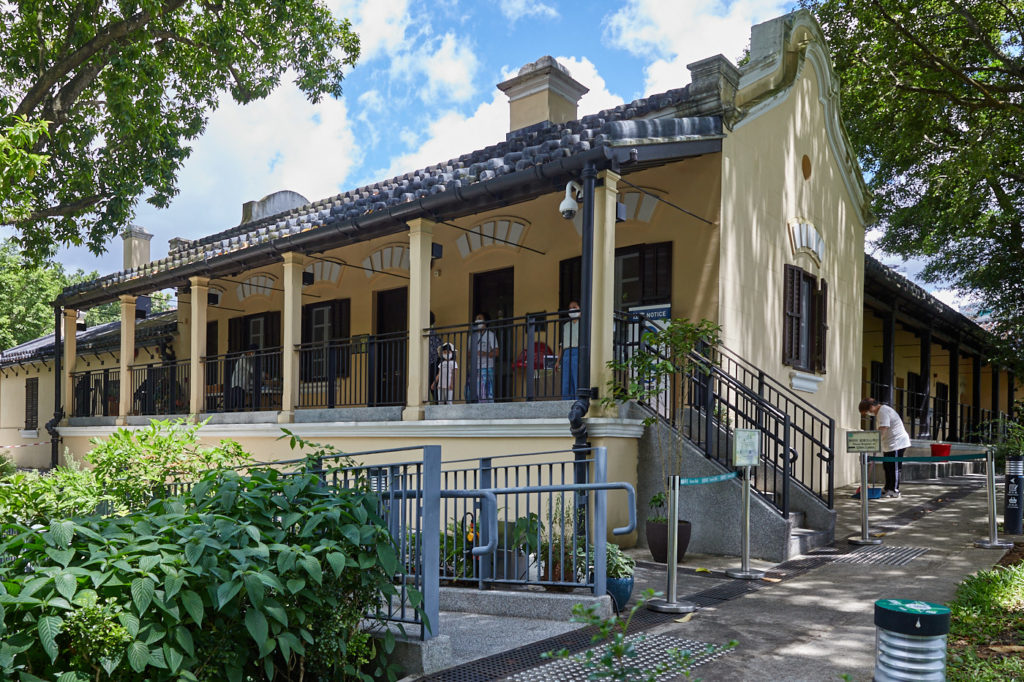
The former Tai Po police station is now called The Green Hub. It houses a small museum, shop, an organic vegetarian cafe and hosts sustainable living workshops for children and adults.
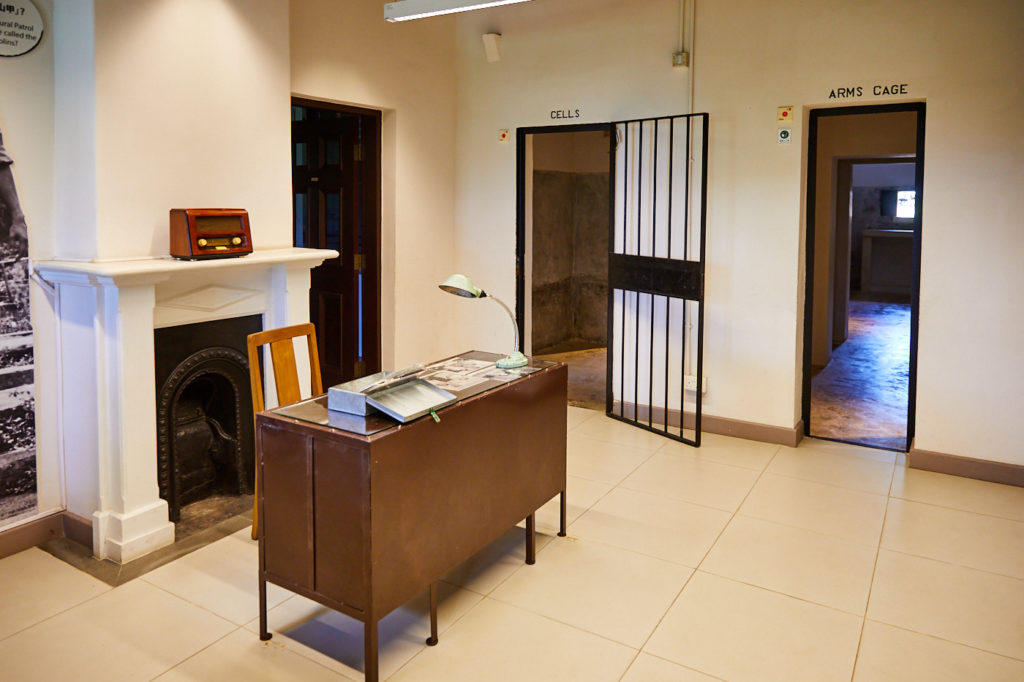
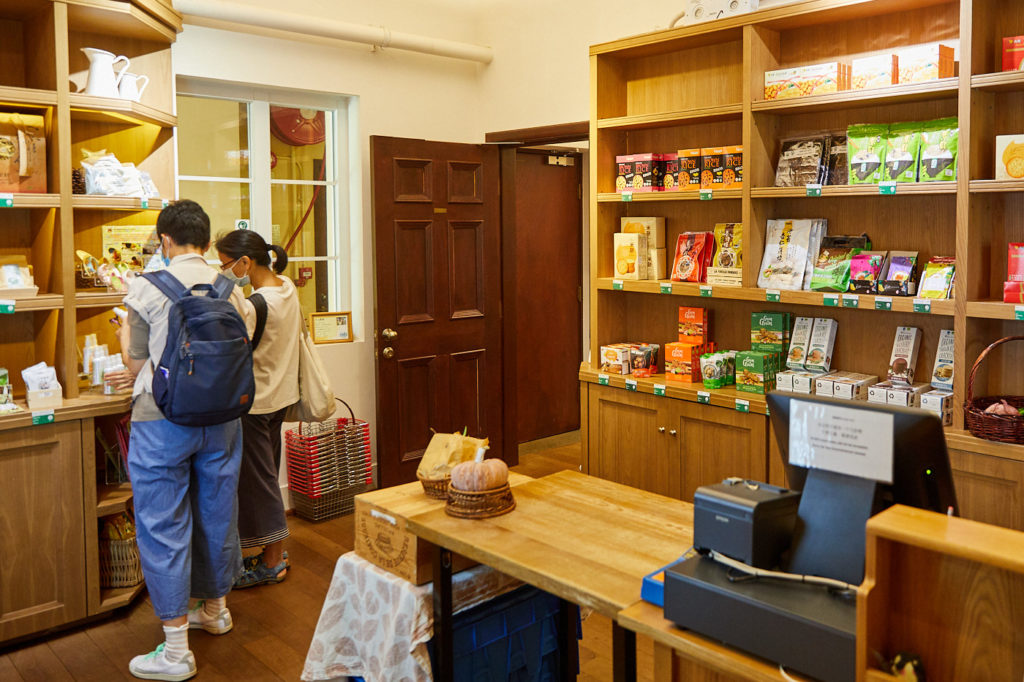
At that time the New Territories were entirely rural. Numerous villages were connected by a network of footpaths but there were no roads. The main population centres were around the market towns of Yuen Long in the west and Tai Po to the east, on the shores of Tolo Harbour.
Much of the organisation and planning for the rebellion was conducted by the Tang clan at Ping Shan just to the west of Yuen Long. They assembled a force of about 2,600 men, gathered from villages across the region, and waged a campaign that was to last six days.
Read also: A brief introduction to the five major clans of the New Territories
Read also: The Ping Shan Heritage Trail
About a thousand of this force had already dug in positions in the hills surrounding Tai Po but the burning of the matsheds had sent their plans for a surprise attack up in smoke. On the 15th the British sent a force of 125 soldiers to protect the site believing this would be enough to make the rebels think again. They were wrong. The soldiers were immediately attacked from three sides.
Had the rebels been better equipped the outcome could have been very different. Their firepower consisted mainly of vintage cannons and jingles, a kind of long-barrelled rifle that was supported on a wall or rampart. For the British, it was still a precarious situation but they held out for ninety minutes. Around 5.30 pm the destroyer, HMS Fame with a pair of twelve-pounder guns, sailed into Tai Po and shelled the rebel positions. This sent them scattering into the hillsides hotly pursued by the British troops until well into the night.
Because military action in territories not yet formally occupied was questionable in international law the flag raising was brought forward a day. It was hoisted by Colonial Secretary Stewart Lockhart at 2.50 pm.
The Green Hub
Flagstaff Hill is no longer called by that name but the police station that was built there after hostilities ceased still stands. It was the police headquarters for the whole new territories until 1949. After that, it served different divisions until it was finally closed down in 1987.
These days it is known as The Green Hub and is run by Kadoorie Farm. The buildings house an interesting museum. There are three structures; the main building, canteen block and staff quarters. Visitors can explore the cells and the armoury and get an idea of everyday police life in the early twentieth century.
The police canteen is now called Eat Well Cafe and offers a range of very tasty dishes and drinks at lunchtime. The hub holds workshops for adults and children on sustainable living and cookery classes including day classes and residential courses. The complex also hosts a small farmers market in the mornings.
Across the road from the Green Hub is the Tai Po District Office (North). It is a typical colonial-style structure finished with red brick and open verandahs. It was built around 1907 and is now the Law Ting Pong Scout Centre.
A tale of two markets
Modern Tai Po looks very different. In 1976 extensive reclamation work took place at the Lam Tseun River estuary. A bustling new commercial centre, residential blocks and industrial estate were built but it has never lost its importance as a market town.
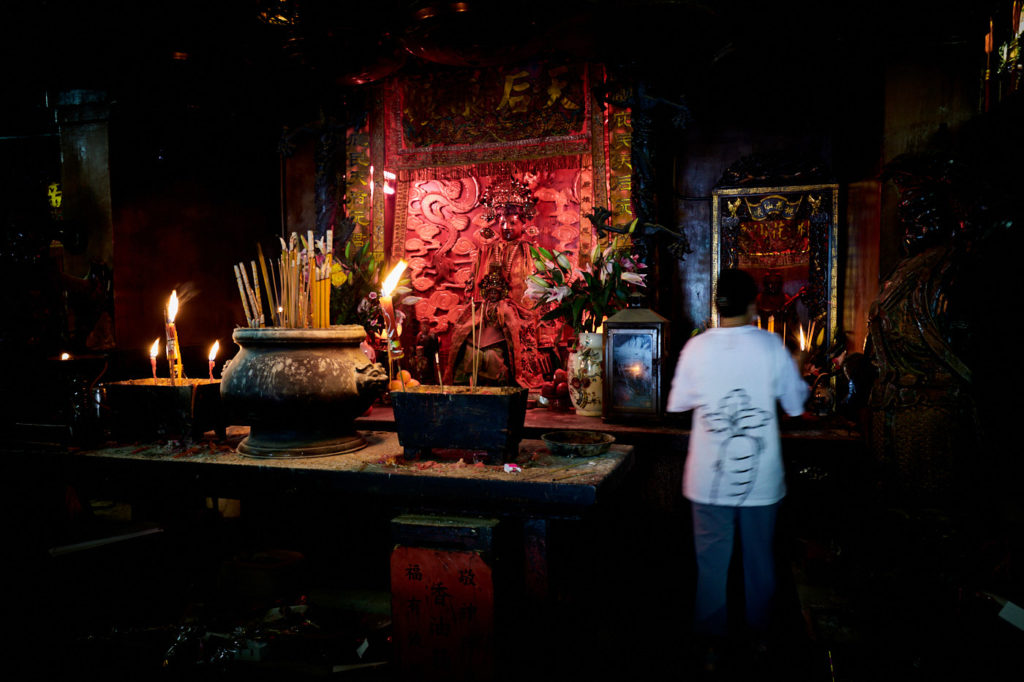
Tin Hau Temple (above and below left). Fu Shin Street remains a bustling marketplace to this day (below right).
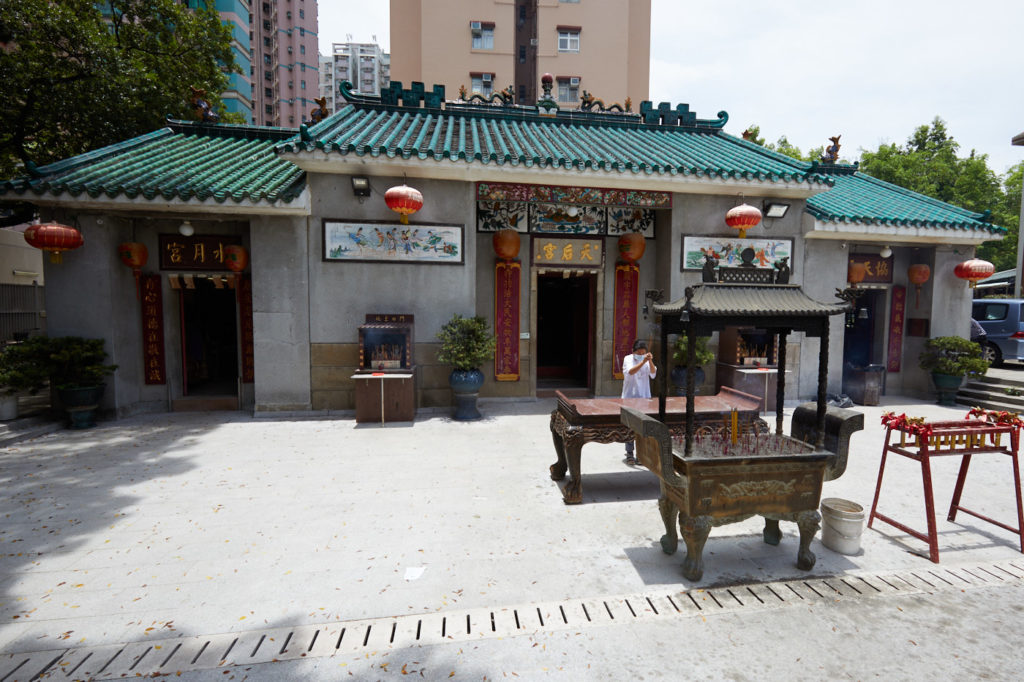
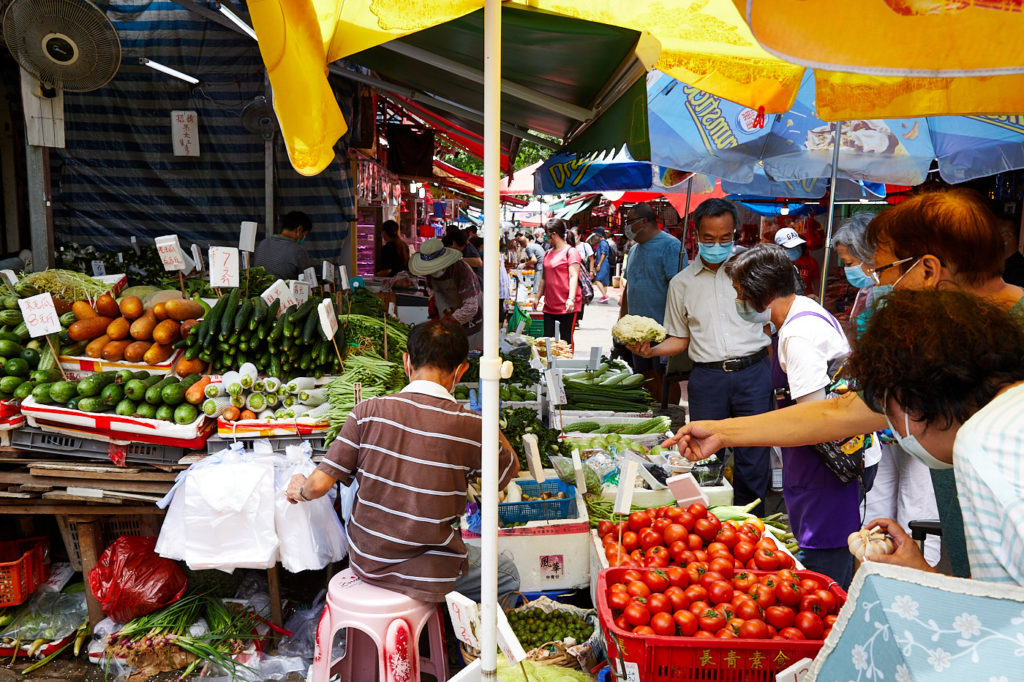
The original market was established by the Tang clan around 1672. It was located on the north of the river. The area where the market stood is now a children’s playground and green space along Ting Kok Road. There is a temple a little further along the road which was also built by the Tangs.
According to an inscription on an old bell inside, the temple was built in 1691. It is primarily dedicated to Tin Hau, the goddess of the sea, but there are smaller altars on either side for the worship of Hip Tin and Tam Sin. It is an atmospheric place. Inside the air is thick with incense from coils that hang from the rafters. A long table is piled with offerings of fruit and soft drinks before an altar over which a statue of Tin Hau, bathed in crimson light, presides.
The Tangs were the dominant political force in the area. They owned the market and could demand high rents as well as preferential purchase rights from tenants. They also owned the ferry which carried villagers across from the south of the river. Non-Tangs had long been unhappy with this arrangement as they felt they were charged an unfair fee to get to market.
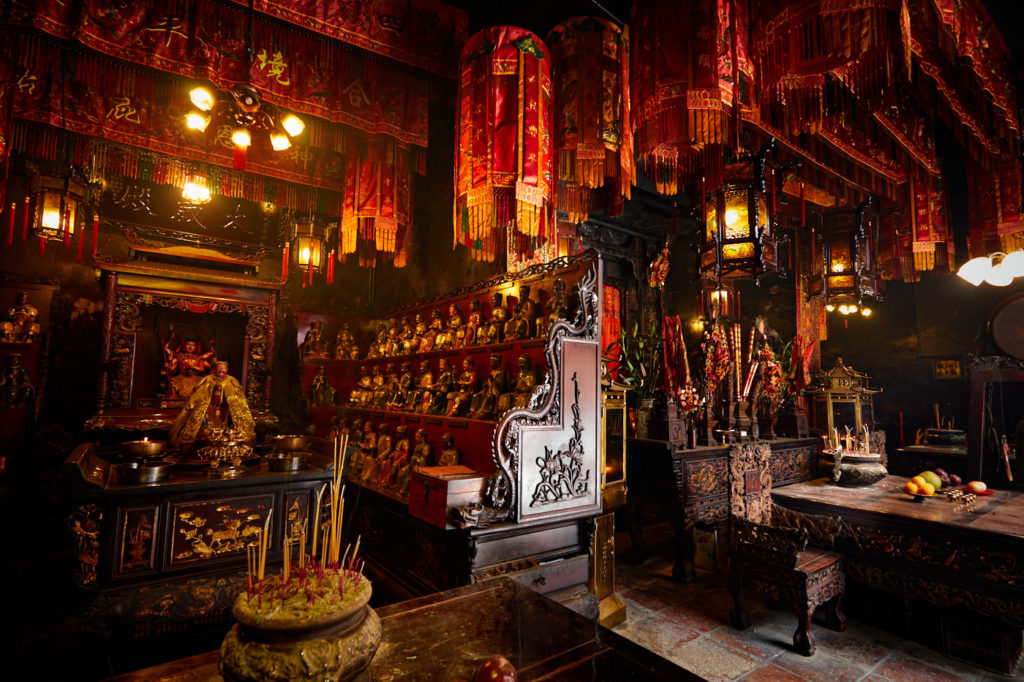
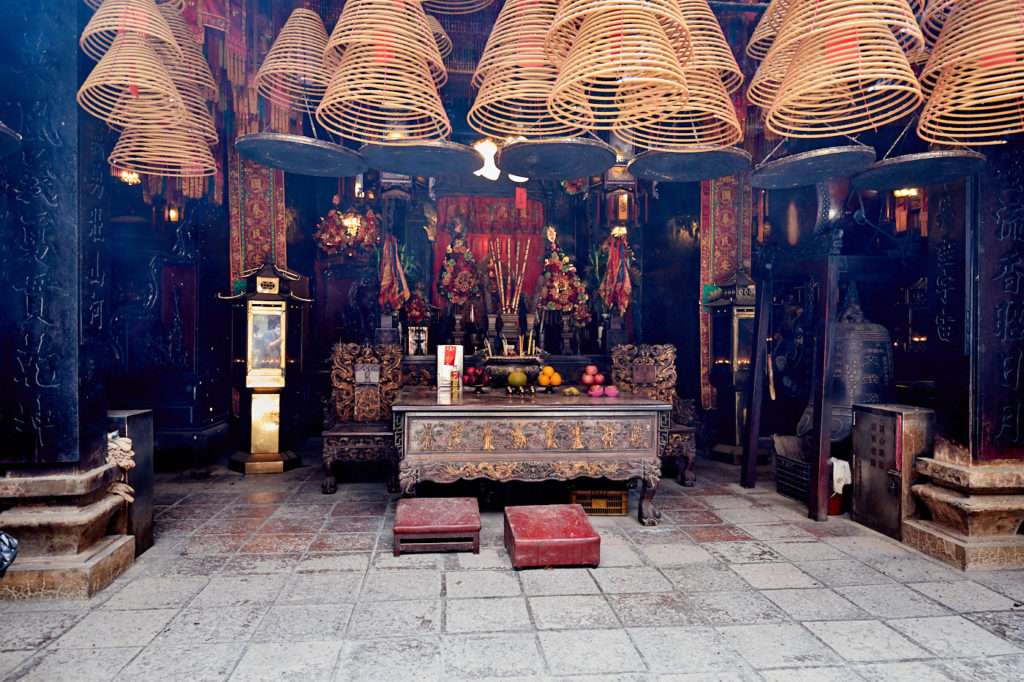
The beautiful and very atmospheric Man Mo temple on Fu Shin Street, Tai Po.
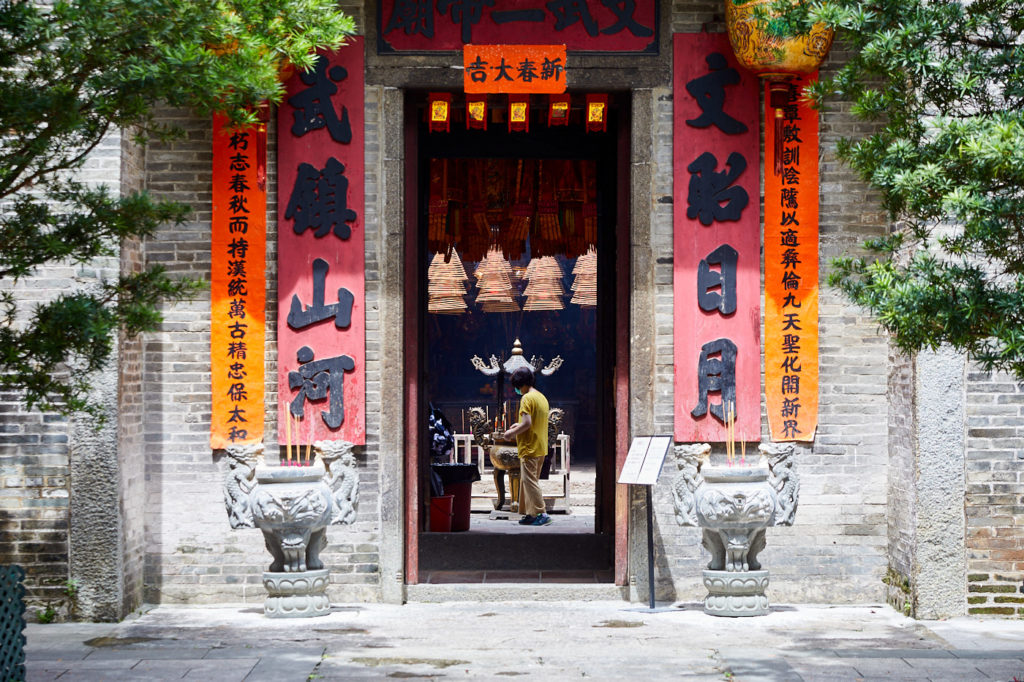
Led by Man Tsam-chuen, on land donated by him, and supported by both the Man and Pang clans the small villages got together and established a new market on the south of the river on what is now Fu Shin Street. The market was administered from a new Man Mo temple and opened in 1892. Another fund was then set up to build a bridge across the river to connect the two markets. A footbridge still stands there to this day (see main pic). The project was so successful that the old market went into decline. It was dealt a further blow when the railways arrived in 1913 with Tai Po Market station adjacent to the new one.
The temple is now listed as a historical monument and, like its neighbour across the river, it is steeped in atmosphere. It is a two-hall structure with screen doors placed in the front hall. Statues of Man Cheong and Mo Tai, the gods of literature and war respectively, flank a beautifully carved wooden altar over which lanterns and banners of red silk hang. The floors are tiled and the roof ridge and facade are decorated with plaster mouldings. It affords an oasis of serenity amidst the bustle of the market.
Railway museum
The old railway station was closed down in 1983 when the line was electrified. It now houses the Hong Kong Railway Museum. It is a small but interesting display. The key feature is probably the main station itself which was built of blue brick in a style reminiscent of temple architecture with a pitched roof, decorative ridge and gables. Inside the building is an exhibition of railway history in Hong Kong.
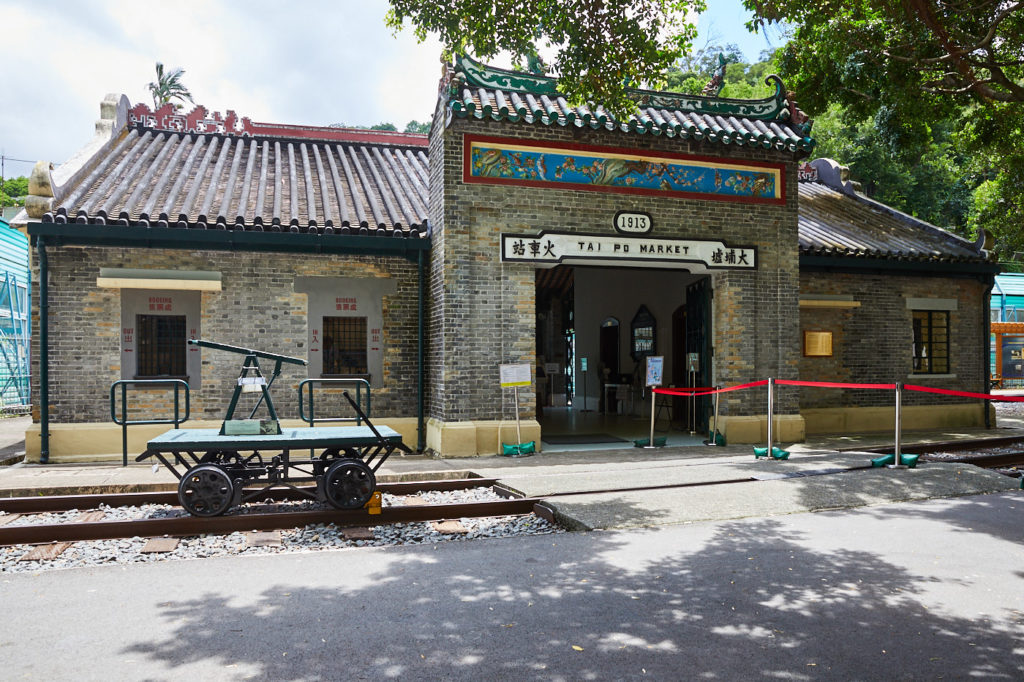
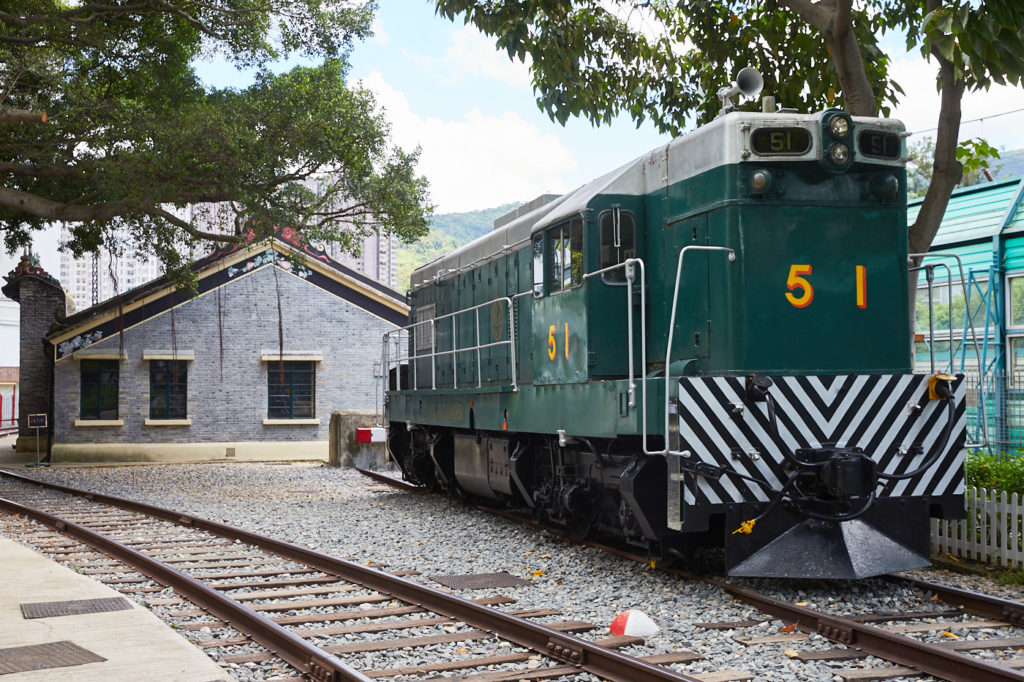
The original Tai Po Market station building is now home to the Hong Kong Railway Museum while locomotive number 51 is one of the main exhibits.
Outside is locomotive number 51, named Sir Alexander. This was the first diesel locomotive to run in Hong Kong. It was built in Australia and went into service in 1955. The only other locomotive is an 0-4-4 narrow gauge pannier tank built in Britain by WG Bagnall. This used to run on the Fanling – Shau Tau Kok branch line but when that line ceased operation in 1928 it was sold to a sugar mill in the Philippines. It was repatriated and restored in 1995. There are also a number of old passenger coaches of various classes.
Man ancestral hall and Tin Hau temple
Man Tsam-chuen came from Tai Hang, a cluster of villages that included two walled villages, Fu Sha Wai and Chung Sum Wai, an ancestral hall and two adjoined temples. One dedicated to Tin Hau which was built in 1727 with a second dedicated to Man Tai which was added in 1884.
Tai Hang itself was founded towards the end of the thirteenth century by Man Tin-cheung (Wen Tianxiang, 1236-1283), a poet and politician who had fled Kublai Kahn’s armies to found the New Territories branch of the Man clan.
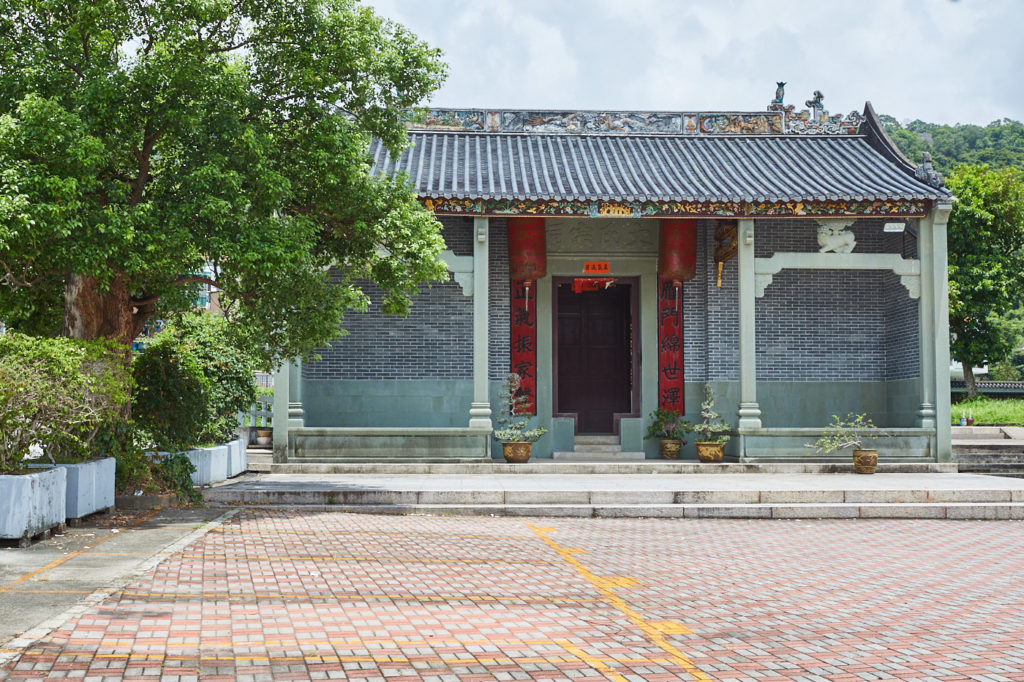
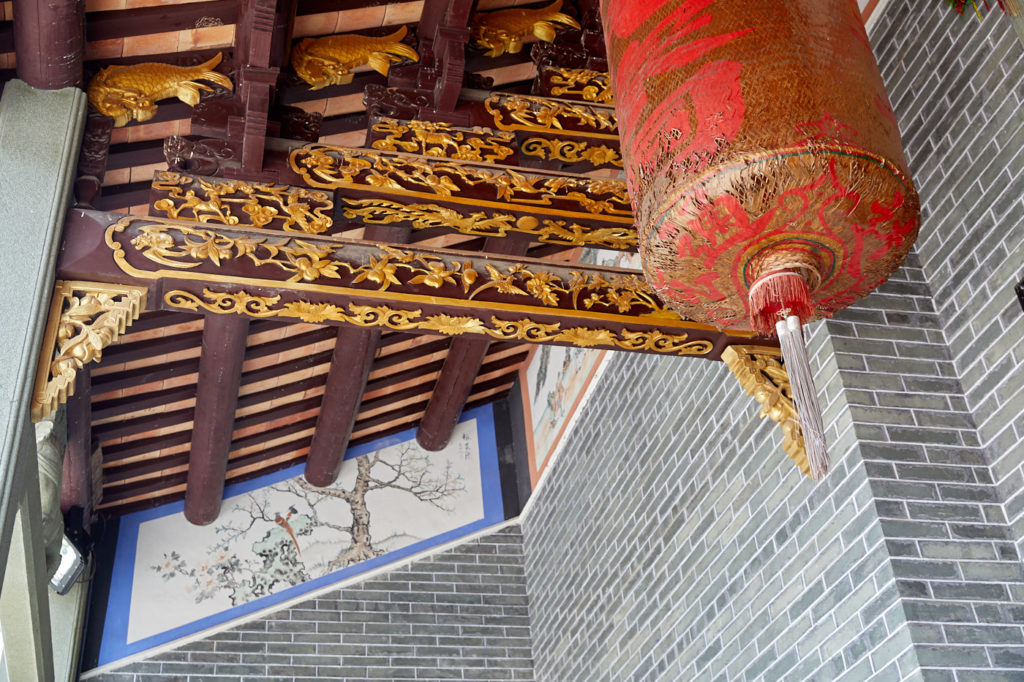
The Man ancestral hall at Tai Hang with details of decorative structural elements (right) and the main altar (below).
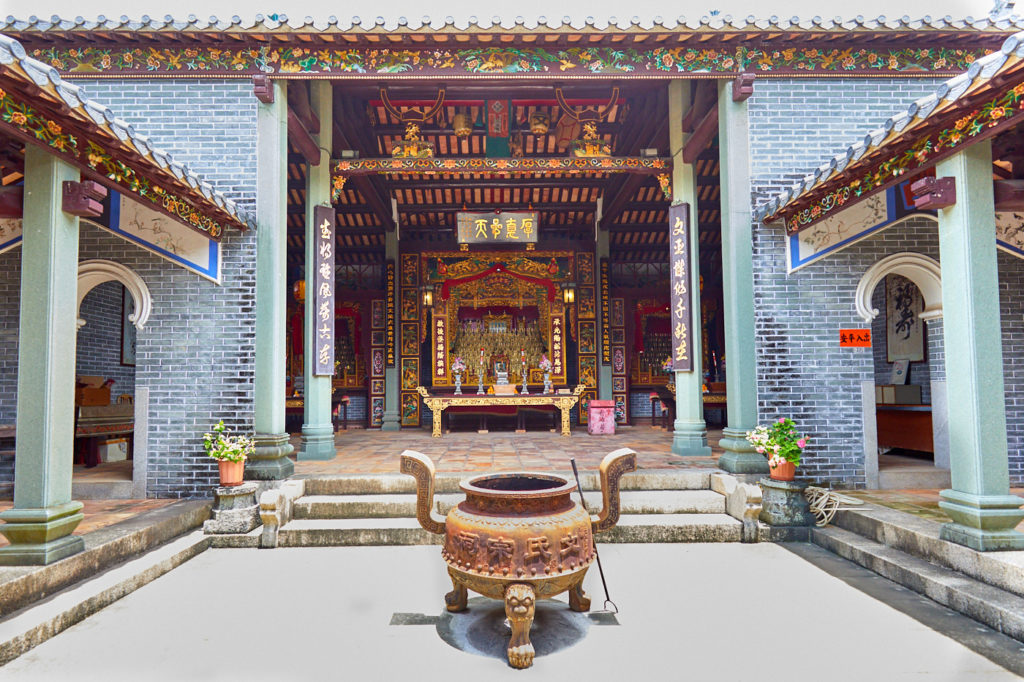
It is a little off the beaten path. To get there take a green minibus number 25A which can be found on Wai Yan Street close to the market. Alight at the Tai Hang Rural Committee building. After getting off the bus keep the building on your right, to the left you will see the walls of Fu Sha Wai. Follow the narrow lane that leads straight ahead and turn right at the end. After a few metres you will see the arch at the entrance to the ancestral hall.
The hall was built during the Ming Dynasty between 1368-1644 but it underwent extensive renovations in 2005. It is a two-hall structure with the ancestral tablets in the rear surrounded by a richly carved and gilded altar. During the renovations, a small park was added boasting an ornamental pond, a pavilion and a statue of Man Tin-cheung.
The temples were under restoration when I visited. An assessment by the Antiques Advisory Board reports that clumsy renovations and modernisation in the past have diminished the building’s historical significance. The renovations, to my untrained eyes, appeared to be trying to right past wrongs.
The walls of the seventeenth-century Fu Sha Wai village are still intact though the gatehouse has been rebuilt. Most of the structures within are modern but the walls themselves are well maintained.
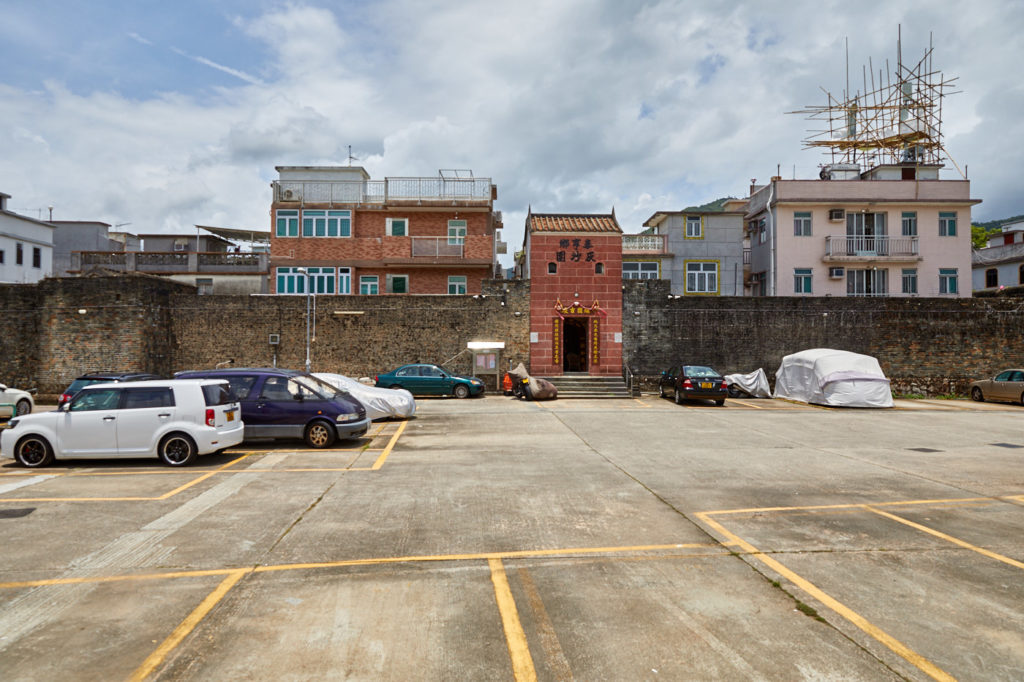
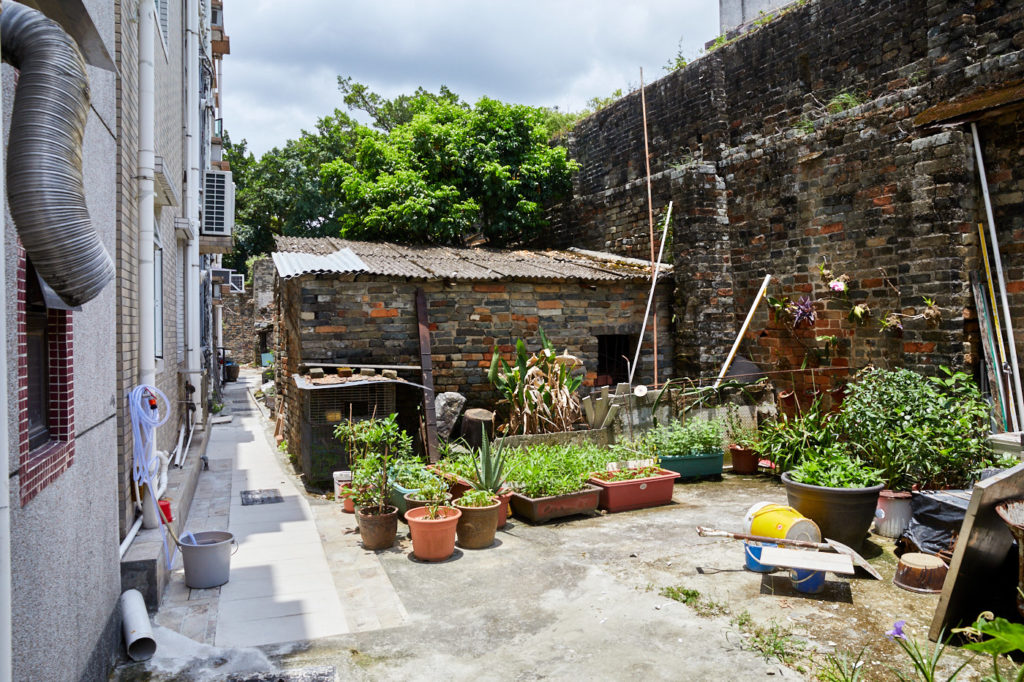
Both sides of the Tai Hang walled village. Although almost all the houses within have been rebuilt villagers still tend small vegetable plots along the walls.
Man Tsam-chuen was also a key figure in the early part of the rebellion. The Six-Day War by Patrick Hase is the only authoritative work on the conflict. Hase suggests that it was most likely Man Tsam-chuen who ordered the burning of the matsheds and that it was fighters trained at Tai Hang who launched the attack on April 15th.
But he then withdrew his men from the war on the 16th after that first battle. Hase estimates the shelling from HMS Fame killed 40-50 rebel fighters. The British side sustained one broken arm.
This is an abridged story from the book, Exploring Hong Kong’s New Territories
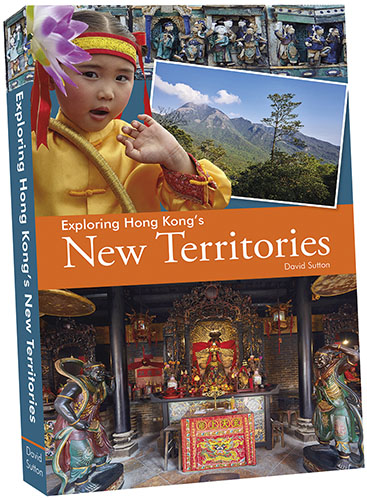
Exploring Hong Kong’s New Territories
The New Territories represents around 85% of Hong Kong’s total land area. It is an area of coastal wetlands and mountains boasting a history of more than a thousand years. There are many ancient monuments, well-maintained hiking trails and outlying islands with old fishing communities. Yet to most visitors, it remains largely unknown.
I spent the Covid years researching, writing and photographing it. Exploring Hong Kong’s New Territories is 332 pages with around 400 colour photographs plus maps and directions. More information here